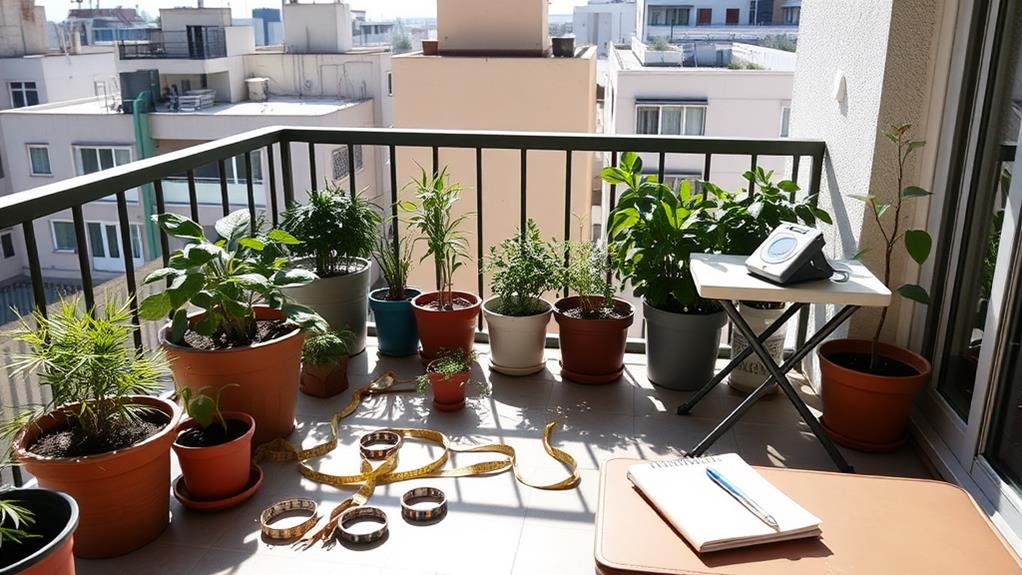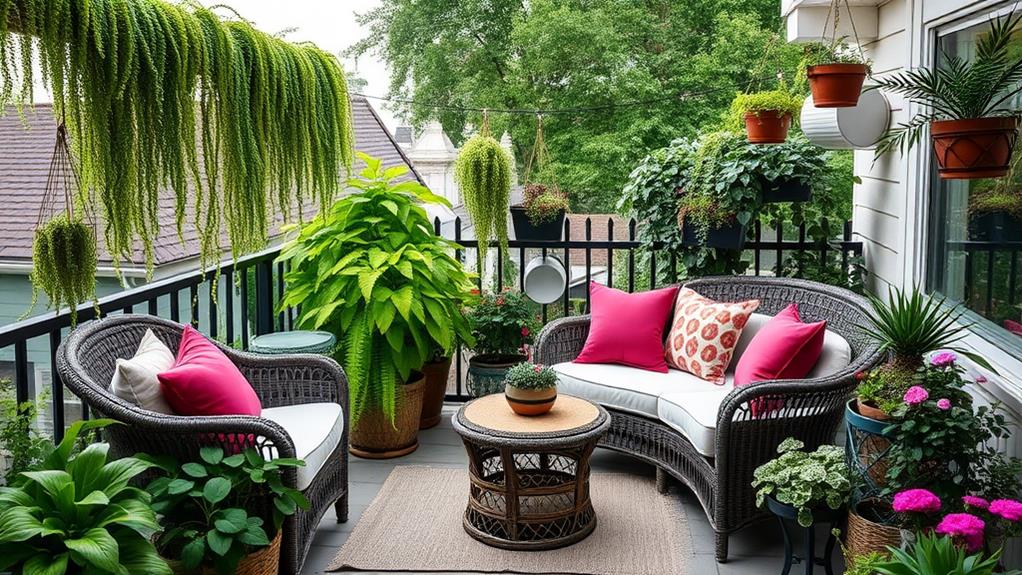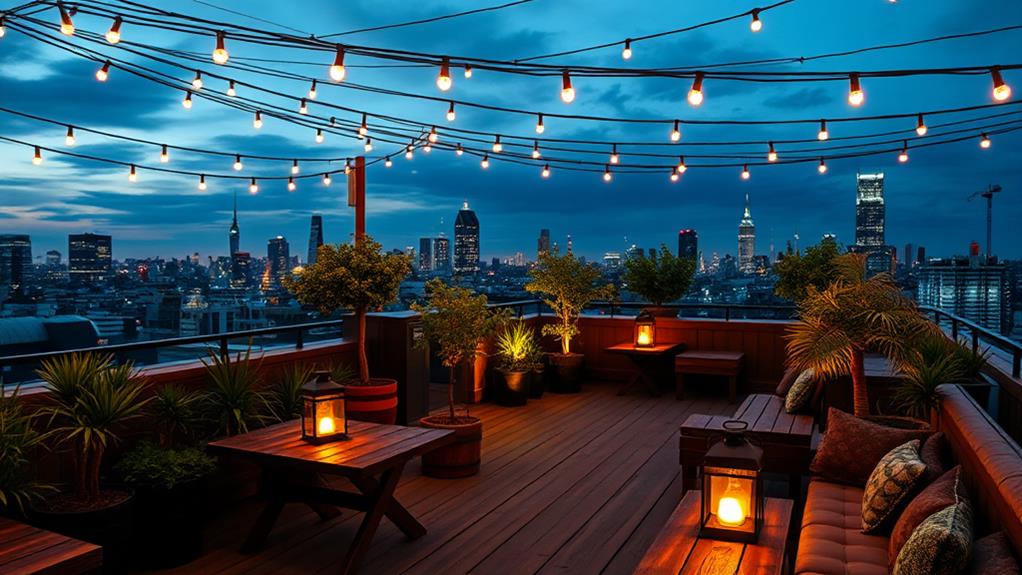Indoor gardeners can successfully transition their skills to outdoor living spaces by applying familiar principles and adapting to new challenges. Start by assessing your outdoor area, considering factors like sun exposure, soil quality, and existing features. Select climate-appropriate plants that thrive in your region, focusing on native species for low maintenance. Create comfortable seating areas with weather-resistant furniture and incorporate water features for added ambiance. Proper lighting enhances the space for evening enjoyment, while regular maintenance keeps your outdoor oasis in top shape. By following these guidelines, indoor gardeners can cultivate beautiful and functional outdoor living spaces that extend their passion beyond the home's walls.
Assessing Your Outdoor Space

Before embarking on any outdoor living space project, one must carefully assess the available area. This crucial step involves evaluating several key factors to ensure a successful transition from indoor to outdoor gardening.
Start by measuring the dimensions of your outdoor space, including length, width, and any irregular shapes. Consider the terrain, noting slopes, level areas, and existing features like trees or structures. Analyze sun exposure throughout the day, identifying areas with full sun, partial shade, or complete shade. This information will guide plant selection and placement.
Assess soil quality through visual inspection and basic tests. Determine soil type, pH levels, and drainage capabilities. Evaluate existing vegetation, deciding which plants to keep, remove, or relocate. Take note of microclimates within your space, such as areas protected from wind or prone to frost.
Consider privacy needs, noise levels, and views you want to enhance or block. Assess utilities, including water sources, electrical outlets, and potential irrigation needs. Finally, check local zoning laws and homeowners' association regulations that may impact your outdoor living space plans.
Selecting Climate-Appropriate Plants
Selecting climate-appropriate plants is a critical step in creating a thriving outdoor living space. Understanding your local climate, including temperature ranges, precipitation patterns, and sun exposure, will guide your plant choices. Research native species that are naturally adapted to your area, as they typically require less maintenance and are more resilient to local pests and diseases.
Consider the USDA Plant Hardiness Zone for your region, which indicates the average annual minimum winter temperature. This information helps determine which plants can survive year-round in your outdoor space. Additionally, factor in microclimates within your yard, such as areas that receive more shade or are protected from wind.
When selecting plants, balance aesthetics with practicality. Choose a mix of perennials, annuals, and evergreens to ensure year-round interest. Consider drought-tolerant options for water conservation, especially in arid climates. For container gardening, opt for plants with similar water and light requirements to simplify care. Remember to account for mature plant sizes to avoid overcrowding and maintain proper spacing. By carefully selecting climate-appropriate plants, you'll create a sustainable and visually appealing outdoor living space that transitions seamlessly from your indoor garden.
Creating Comfortable Seating Areas

Comfortable seating areas are the cornerstone of any inviting outdoor living space. When designing these areas, consider the layout, furniture selection, and ambiance to create a cozy and functional environment.
Begin by assessing the available space and determining the primary purpose of the seating area, whether it's for dining, lounging, or entertaining.
Choose weather-resistant furniture that complements your outdoor aesthetic and provides ample seating for your needs. Opt for materials like teak, aluminum, or all-weather wicker that can withstand various climate conditions. Incorporate a mix of seating options, such as chairs, sofas, and ottomans, to accommodate different preferences and activities.
Enhance comfort by adding plush cushions and throw pillows in weather-resistant fabrics. Consider including shade elements like umbrellas or pergolas to protect from sun and light rain.
Create a focal point with a fire pit or outdoor fireplace to extend the usability of the space into cooler evenings. Finally, add ambient lighting with string lights, lanterns, or solar-powered fixtures to create a warm and inviting atmosphere for evening gatherings.
Incorporating Water Features
Water features can transform an outdoor living space, adding a sense of tranquility and natural beauty. For indoor gardeners venturing outdoors, incorporating water elements can create a serene atmosphere reminiscent of their indoor oases. Options range from simple tabletop fountains to elaborate ponds or cascading waterfalls.
When selecting a water feature, consider the size of your outdoor space and maintenance requirements. Small spaces benefit from wall-mounted fountains or compact water bowls, while larger areas can accommodate more substantial features like reflection pools or bubbling rock formations. Choose materials that complement your existing outdoor decor, such as natural stone, copper, or ceramic.
To enhance the sensory experience, strategically place water features near seating areas where the sound of flowing water can be fully appreciated. Incorporate aquatic plants like water lilies or lotus to add visual interest and support local ecosystems. Proper lighting can extend the enjoyment of your water feature into the evening hours, creating a magical ambiance. Remember to consider practical aspects such as power sources, water supply, and drainage when planning your installation to ensure a seamless integration into your outdoor living space.
Lighting for Ambiance

Illuminate your outdoor living space to create a captivating ambiance that extends your enjoyment well into the evening hours. Strategic lighting can transform your outdoor area into a magical retreat, enhancing its functionality and aesthetic appeal. Consider layering different types of lighting to achieve a balanced and inviting atmosphere.
Start with ambient lighting to provide overall illumination. Use weatherproof string lights, lanterns, or overhead fixtures to cast a soft glow across the space.
Accent lighting highlights specific features, such as plants, water elements, or architectural details. Employ spotlights, uplights, or well lights to draw attention to these focal points. For task lighting, incorporate path lights along walkways and brighten seating areas with wall sconces or tabletop lamps.
Choose energy-efficient LED bulbs in warm color temperatures (2700-3000K) to create a cozy atmosphere. Solar-powered options offer eco-friendly alternatives and eliminate the need for electrical wiring. Dimmable fixtures and smart lighting systems allow you to adjust brightness levels and create different moods. Remember to consider light pollution and position fixtures to minimize glare and spillover into neighboring properties. With thoughtful lighting design, your outdoor living space will become an enchanting nighttime oasis.
Maintenance and Care Tips
Maintaining your outdoor living space is essential to ensure its longevity and continued enjoyment. Regular cleaning of surfaces, furniture, and decor items helps prevent the buildup of dirt, mold, and mildew. Use appropriate cleaning solutions for different materials, such as mild soap for wood and specialized cleaners for metals or fabrics.
Inspect your outdoor space periodically for signs of wear, damage, or pest infestations. Address issues promptly to prevent further deterioration. Apply protective coatings or sealants to wood and metal surfaces as needed to guard against weather-related damage. For outdoor cushions and fabrics, consider using water-repellent sprays to extend their lifespan.
Properly store or cover furniture and equipment during harsh weather conditions or when not in use for extended periods. Trim surrounding vegetation regularly to prevent overgrowth and maintain desired aesthetics. Clean gutters and drainage systems to ensure proper water flow and prevent water damage.
For outdoor kitchens or grilling areas, deep clean appliances and surfaces after each use. Regularly check and maintain electrical components, ensuring they are protected from moisture and weather exposure. By following these maintenance tips, you can preserve the beauty and functionality of your outdoor living space for years to come.
Frequently Asked Questions
How Can I Protect My Outdoor Plants From Pests and Wildlife?
To protect outdoor plants from pests and wildlife, implement integrated pest management strategies. Use physical barriers like netting and fencing, employ companion planting techniques, apply organic repellents, and maintain plant health through proper care and nutrition.
What Are the Best Pet-Friendly Plants for Outdoor Living Spaces?
Did you know that 67% of pet owners consider their pets when choosing plants? For pet-friendly outdoor spaces, consider sunflowers, marigolds, snapdragons, and petunias. These colorful options are safe for pets and add vibrant beauty to your garden.
How Do I Create Privacy in My Outdoor Area Without Building a Fence?
To create privacy in your outdoor area without a fence, consider using tall potted plants, climbing vines on trellises, bamboo screens, outdoor curtains, or strategically placed outdoor furniture. These options offer flexibility and aesthetic appeal while maintaining seclusion.
Can I Grow Edible Plants in My Outdoor Living Space?
Absolutely! Growing edible plants in your outdoor living space is not only possible but also rewarding. You can cultivate a variety of fruits, vegetables, and herbs in containers, raised beds, or dedicated garden plots, depending on your available space.
How Can I Incorporate Sustainable Practices Into My Outdoor Living Area Design?
Imagine transforming your outdoor space into an eco-haven. Sustainable practices can be seamlessly integrated through rainwater harvesting, composting, native plant selection, and solar-powered lighting. These elements not only reduce environmental impact but also create a harmonious, self-sustaining oasis.
Conclusion
In conclusion, transforming outdoor spaces into living extensions of the home requires careful planning and execution. By assessing the area, selecting suitable plants, creating comfortable seating, and incorporating water and lighting elements, indoor gardeners can cultivate inviting outdoor sanctuaries. As the adage goes, "Bloom where you are planted," and with proper maintenance, these spaces will flourish. The principles of indoor gardening, when applied outdoors, yield harmonious environments that bridge the gap between interior comfort and natural beauty.

